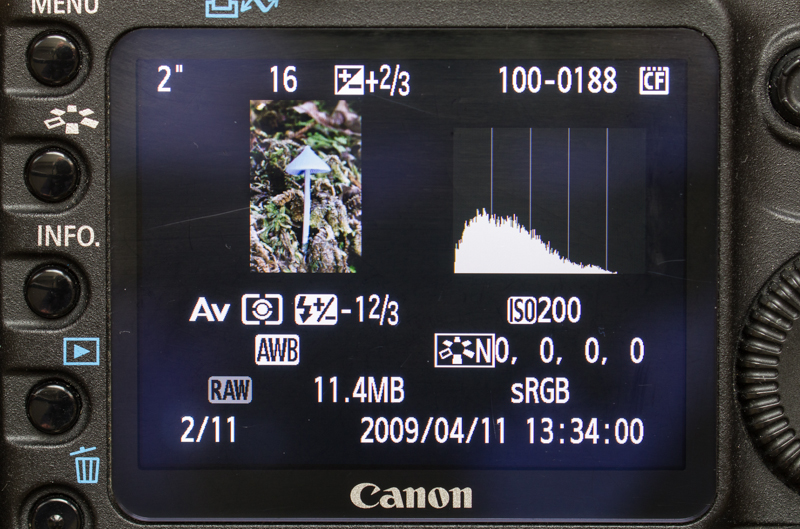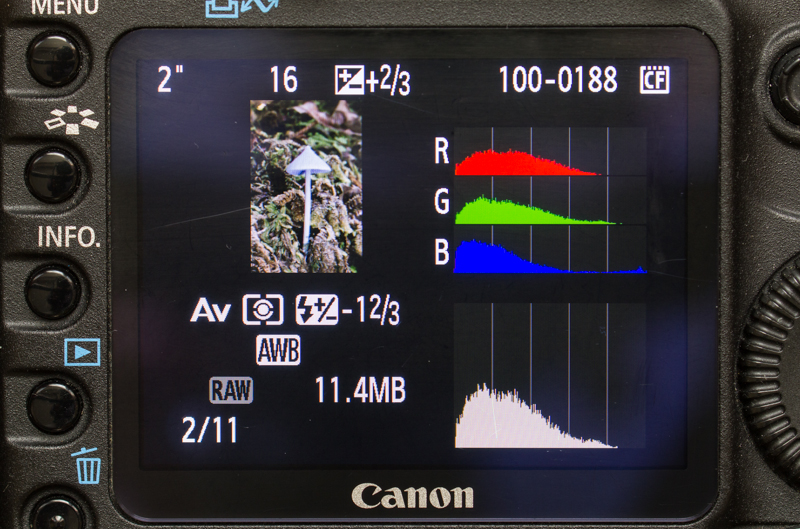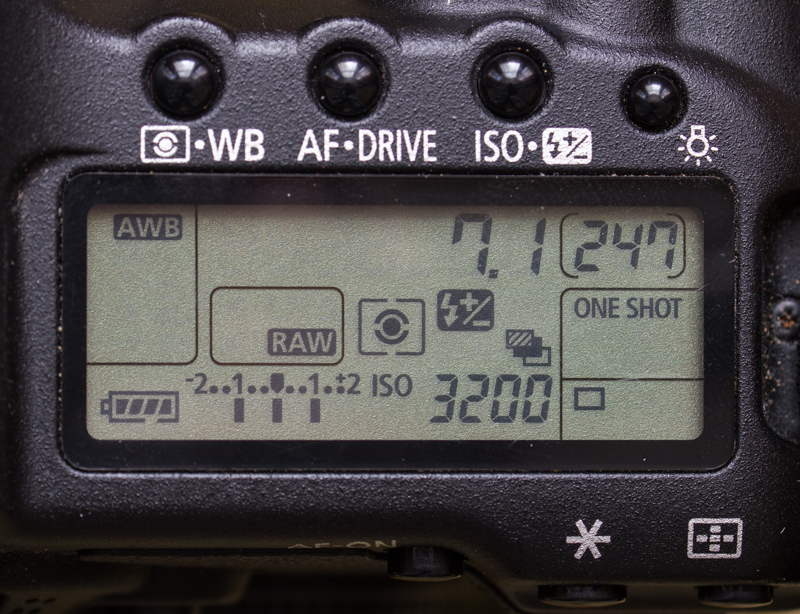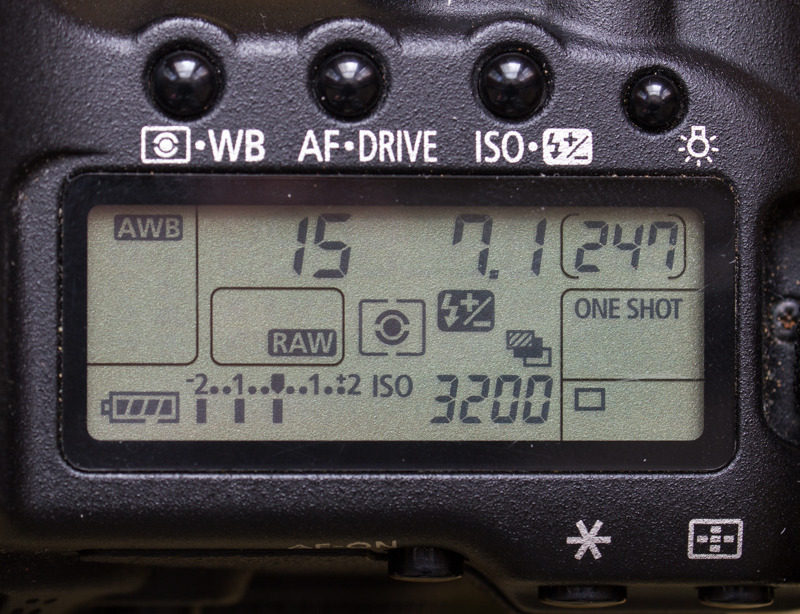In part one of of this post I looked at exposing to the right. That’s fine if you are saving your images as raw files and don’t clip your highlights too much. Software can recover some clipping within reason. But regardless of whether you are using ETTR or converting your photos to jpegs in the camera, accurate exposure often depends on which histogram you are looking at.
If you look at the leading edge of this little blue fungus you may note patches where there is complete loss of colour:

Parts of the stalk have suffered a similar fate. These patches have been overexposed to the point where they are pure white and all detail has been lost. In other words, the highlights have been “clipped” or “blown”.
What has gone wrong? Let’s look at the histogram:

Hang on! According to the histogram on the back of the camera there is ample room between the right edge of the histogram and the maximum exposure before it clips. Is the camera telling fibs? Well……. yes. Photographers have been trying for years to get the histogram to accurately reflect the raw exposure, but that is another story and not really the problem here.
The issue is that I had set the camera back to show the luminance histogram. A typical camera sensor has a red, green or blue filter over each photosite, and the resulting information is used to construct the image. Sixty percent of the histogram is taken from the green channel, thirty percent from the red channel and only ten percent from the blue. Camera manufacturers put a lot of effort into optimising the green channel, and you need to remember this if your subject has significant blue or red elements. Red roses, blue fungi etc. Because the luminance histogram is based toward the green channel, red or blue channel clipping may not show up.
I should have set the camera to show the RGB channels separately. Like this:

Now we get closer to the real story. You can see the blue channel is badly clipped, but it doesn’t show up below in the luminance histogram.
Most cameras will display separate RGB histograms. If yours doesn’t then there are some solutions when faced with a similar situation. Here are two.
Firstly try exposure bracketing. On my camera that looks like this:

The camera is set to one stop of under exposure, then the exposure the camera thinks is correct, and then one stop over exposure. The one stop over exposure will be unwanted in the above situation, so I would then apply exposure compensation to the bracketing. Like this:

Now we have two stops and then one stop of under exposure, and then what the camera thinks is correct. Chances are one will be correctly exposed, as long as there is no bright direct sun on any parts of the subject.
Which brings me to solution two. Use some curtain netting or similar to filter the light so that it is more even. Try reflecting more light onto the subject. In an emergency a white handkerchief will do. Above all try to eliminate strong highlights. And remember to have fun.